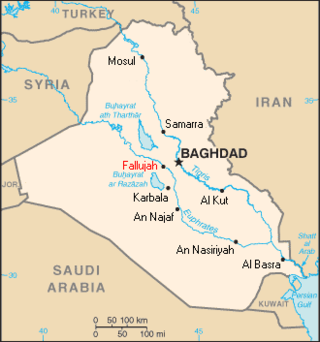Related Research Articles

Hai ben Sherira better known as Hai Gaon, was a medieval Jewish theologian, rabbi and scholar who served as Gaon of the Talmudic academy of Pumbedita during the early 11th century. He was born in 939 and died on March 28, 1038. He received his Talmudic education from his father, Sherira ben Hanina, and in early life acted as his assistant in teaching. In his forty-fourth year he became associated with his father as "av bet din," and with him delivered many joint decisions. According to Sefer HaKabbalah of Rabbi Abraham ben David (Ravad), he was the last of the Geonim.
Judah ben Samuel of Regensburg, also called Yehuda HeHasid or 'Judah the Pious' in Hebrew, was a leader of the Chassidei Ashkenaz, a movement of Jewish mysticism in Germany considered different from the 18th-century Hasidic movement founded by the Baal Shem Tov.
Rishonim were the leading rabbis and poskim who lived approximately during the 11th to 15th centuries, in the era before the writing of the Shulchan Aruch and following the Geonim. Rabbinic scholars subsequent to the Shulchan Aruch are generally known as acharonim.
Moshe haDarshan was chief of the yeshiva of Narbonne, and perhaps the founder of Jewish exegetical studies in France. Along with Rashi, his writings are often cited as the first extant writings in Zarphatic, the Judæo-French language.
Zerachiah ben Isaac ha-Levi Gerondi, called the ReZaH, RaZBI or Baal Ha-Maor was born about 1115 in the town of Gerona, Catalonia, Spain – hence the name Gerondi – and died after 1186 in Lunel. He was a famous rabbi, Torah and Talmud commentator and a poet.
Jedaiah ben Abraham Bedersi was a Jewish poet, physician, and philosopher; born at Béziers. His Occitan name was En Bonet, which probably corresponds to the Hebrew name Tobiah; and, according to the practices of Hachmei Provence, he occasionally joined to his name that of his father, Abraham Bedersi.
Zedekiah ben Abraham Anaw was an author of halakhic works and younger brother of Benjamin ben Abraham Anaw. He lived at Rome and received his Talmudic training not only in Rome but also in Germany where he was the pupil of Jacob of Würzburg and possibly also of Abigdor Cohen of Vienna.
Tobiah ben Eliezer was a Talmudist and poet of the 11th century, author of Lekach Tov or Pesikta Zutarta, a midrashic commentary on the Pentateuch and the Five Megillot.
Nathan ben Jehiel of Rome was a Jewish Italian lexicographer. He authored the Arukh, a notable dictionary of Talmudic and Midrashic words, and consequently he himself is often referred to as "the Arukh".

This article incorporates text from a publication now in the public domain: Singer, Isidore; et al., eds. (1901–1906). "14236-tanhuma-midrash". The Jewish Encyclopedia. New York: Funk & Wagnalls.
Joseph ben Isaac Bekhor Shor of Orléans was a French tosafist, exegete, and poet who flourished in the second half of the 12th century. He was the father of Abraham ben Joseph of Orleans and Saadia Bekhor Shor.
Abraham ben Isaac of Narbonne (c. 1080-85 – 1158) was a Provençal rabbi, also known as Raavad II, and author of the halachic work Ha-Eshkol.
Isaiah di Trani ben Mali (the Elder) (c. 1180 – c. 1250) (Hebrew: ישעיה בן מאלי הזקן דטראני), better known as the RID, was a prominent Italian Talmudist.

Jonah ben Abraham Gerondi, also known as Jonah of Girona and Rabbeinu Yonah, was a Catalan rabbi and moralist, cousin of Nahmanides. He is most famous for his ethical work The Gates of Repentance.
Perez ben Elijah of Corbeil was a French tosafist, son of the Talmudist Elijah of Tours. In Talmudic literature he is designated by the abbreviations RaP, RaPaSh, and MaHaRPaSh.
Shem Tov ben Abraham ibn Gaon was a Spanish Talmudist and kabbalist.
Judah ben Barzillai (Albargeloni) was a Catalan Talmudist of the end of the 11th and the beginning of the 12th century. Almost nothing is known of his life. He came of a very distinguished family, on account of which he was not seldom called "ha-Nasi" (the prince), a title of honor borne also by his descendants in Barcelona.
Samuel ben Hofni. He was the Gaon of Sura from 998 to 1012.

The Mekhilta of Rabbi Shimon ben Yochai is midrash halakha on Book of Exodus from the school of Rabbi Akiva attributed to Shimon bar Yochai. No midrash of this name is mentioned in Talmudic literature, but Nachmanides (d.1270) refers to one which he calls either Mekhilta de-Rabbi Shimon ben Yochai, Mekhilta Achǝrita de-Rabbi Shimon, or simply Mekhilta Acheret. Todros ben Joseph Abulafia (d.1285) also refers to Mekhilta de-Rabbi Shimon ben Yochai.
Kalonymos or Kalonymus is a prominent Jewish family who lived in Italy, mostly in Lucca and in Rome, which, after the settlement at Mainz and Speyer of several of its members, took during many generations a leading part in the development of Jewish learning in Germany. The family is according to many considered the foundation of Hachmei Provence and the Ashkenazi Hasidim.
References
- ↑ Sarton, George (1962). Introduction to the History of Science ... Carnegie Institution of Washington. p. 1118.
- ↑ Zunz, "Z. G." p. 280
- ↑ ed. Mekitze Nirdamim, 1884, i. 71 et seq.
 This article incorporates text from a publication now in the public domain : Singer, Isidore; et al., eds. (1901–1906). "Anaw, Benjamin b. Abraham". The Jewish Encyclopedia . New York: Funk & Wagnalls. Bibliography:
This article incorporates text from a publication now in the public domain : Singer, Isidore; et al., eds. (1901–1906). "Anaw, Benjamin b. Abraham". The Jewish Encyclopedia . New York: Funk & Wagnalls. Bibliography:- Hermann Vogelstein and Paul Rieger, Geschichte der Juden in Rom, i. 379 et seq.;
- Moritz Steinschneider, Cat. Bodl. No. 4514;
- Zunz, Literaturgeschichte, pp. 352 et seq.;
- Landshuth, 'Ammude ha-'Abodah, p. 51;
- Moritz Güdemann, Gesch. des Erziehungswesens der Juden in Italien, p. 201;
- Michael, Or ha-Chayyim, No. 570.